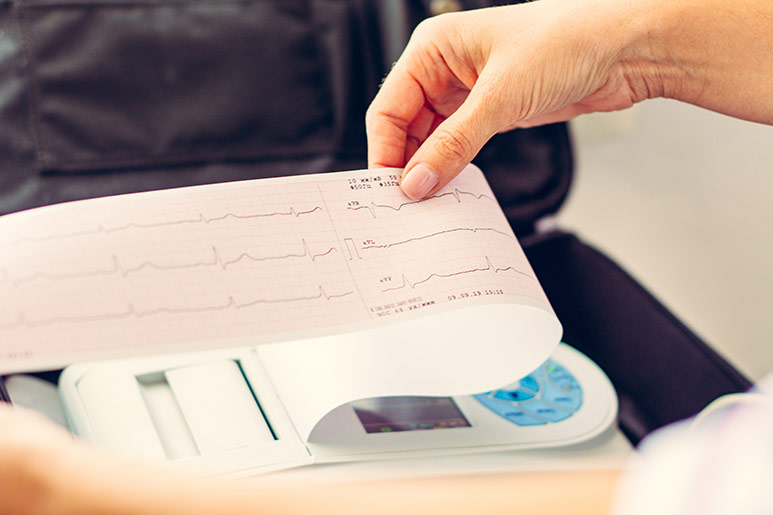Atrial Flutter
What is Atrial Flutter? Atrial flutter is a form of tachycardia (fast heart beat). There is a circuit that occurs in the upper chambers of the heart called the atria. The circuit causes the atria to pump rapidly. Unlike atrial fibrillation, atrial flutter has a regular pattern and rhythm.

There are two types of atrial flutter: typical and atypical. The difference is based on the location of the issue. Their symptoms are similar, but it's important to understand the difference between typical and atypical atrial flutter, as they often require different treatment plans. Typical atrial flutter is in the right atrium. Atypical atrial flutter arises in the left atrium or other parts of the right atrium than the normal origin point.
Symptoms of atrial flutter can include:
- stroke
- heart palpitations,
- rapid heart rate,
- angina (chest pain),
- dizziness and fainting,
- dyspnea (shortness of breath),
- lightheadedness,
- low blood pressure,
- fatigue.
Some individuals do not experience any symptoms.
Atrial flutter is not inherently dangerous but if left untreated it can cause a stroke due to a blood clot stuck in an artery or can cause the weakening of the heart muscles, known as cardiomyopathy.
Causes and Risk Factors? Atrial flutter is usually an age-related tachycardia, however, there are usually other medical conditions that increase the risk of this condition occurring.
These related medical conditions include:
- Prior cardiac surgery
- Prior catheter ablation or atrial fibrillation
- Heart failure
- Previous heart attack
- Acquired or congenital valve abnormalities
- High blood pressure
- Thyroid dysfunction
- Alcoholism
- Diabetes
- Chronic lung disease
- Recent upper chamber surgery
Diagnosis and Treatments? Atrial flutters are usually diagnosed through electrocardiograms. If the diagnosis is still unsure, you may be recommended a Holter monitor, an event monitor, or a catheter may be inserted and used to get a clearer understanding of the abnormal heart beat.
To treat atrial flutters, there are many courses of action that can be taken to improve symptoms and the condition itself. Catheter ablation is a procedure used to disrupt the irregular electrical circuit. Cardioversion is a procedure where a small and controlled shock to the chest under anesthesia. The shock corrects the heart's rhythm. Antiarrhythmic medications can be used to convert the heart rhythm back to normal or to maintain a normal heart rhythm after a cardioversion.
To treat the fast heart rate that occurs due to atrial flutter can be treated with medications that work to slow down heart rate. These medications include beta-blockers, calcium channel blockers, and digoxin (medicine known for blood pressure support and antiarrhythmic properties).
There are also measures that can be taken to reduce the risk of stroke. These measures are usually only taken when a patient has an atrial flutter and other risk factors. If this is the case, a blood thinner may be prescribed.
